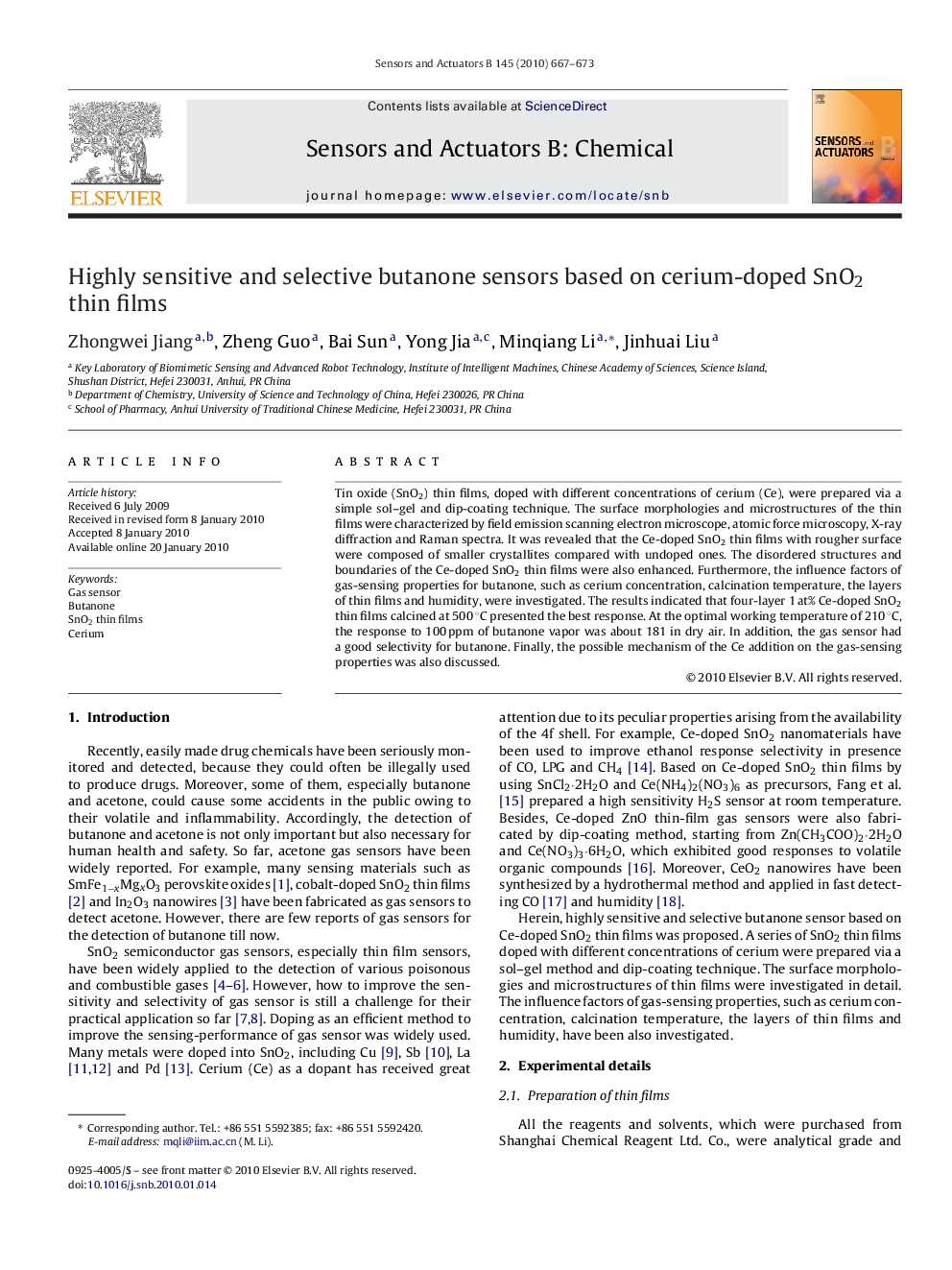| Article ID | Journal | Published Year | Pages | File Type |
|---|---|---|---|---|
| 751319 | Sensors and Actuators B: Chemical | 2010 | 7 Pages |
Tin oxide (SnO2) thin films, doped with different concentrations of cerium (Ce), were prepared via a simple sol–gel and dip-coating technique. The surface morphologies and microstructures of the thin films were characterized by field emission scanning electron microscope, atomic force microscopy, X-ray diffraction and Raman spectra. It was revealed that the Ce-doped SnO2 thin films with rougher surface were composed of smaller crystallites compared with undoped ones. The disordered structures and boundaries of the Ce-doped SnO2 thin films were also enhanced. Furthermore, the influence factors of gas-sensing properties for butanone, such as cerium concentration, calcination temperature, the layers of thin films and humidity, were investigated. The results indicated that four-layer 1 at% Ce-doped SnO2 thin films calcined at 500 °C presented the best response. At the optimal working temperature of 210 °C, the response to 100 ppm of butanone vapor was about 181 in dry air. In addition, the gas sensor had a good selectivity for butanone. Finally, the possible mechanism of the Ce addition on the gas-sensing properties was also discussed.
